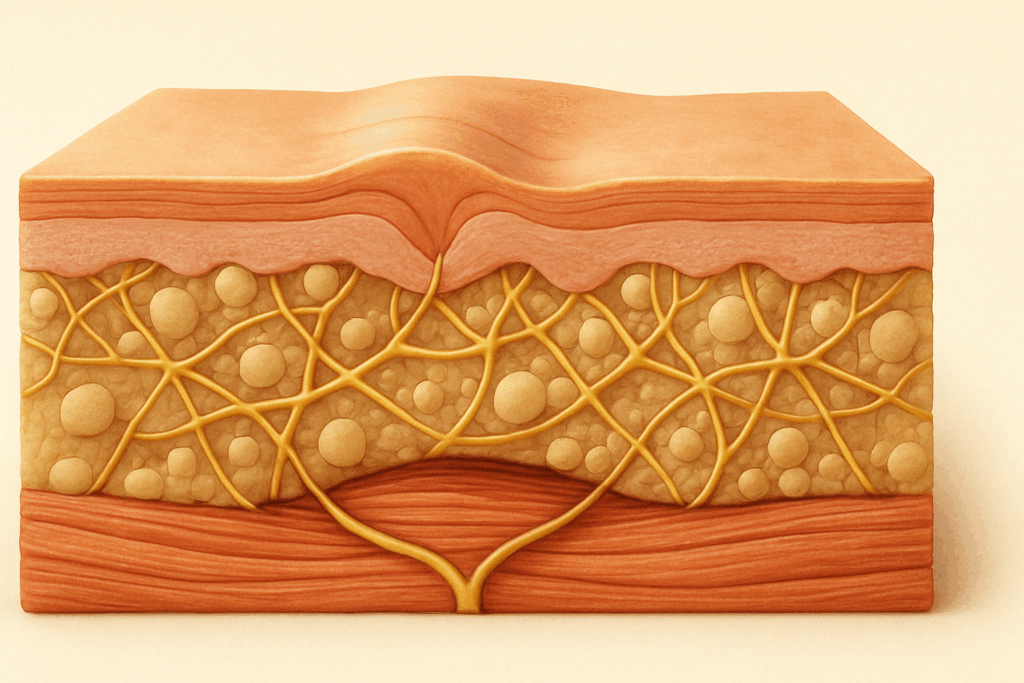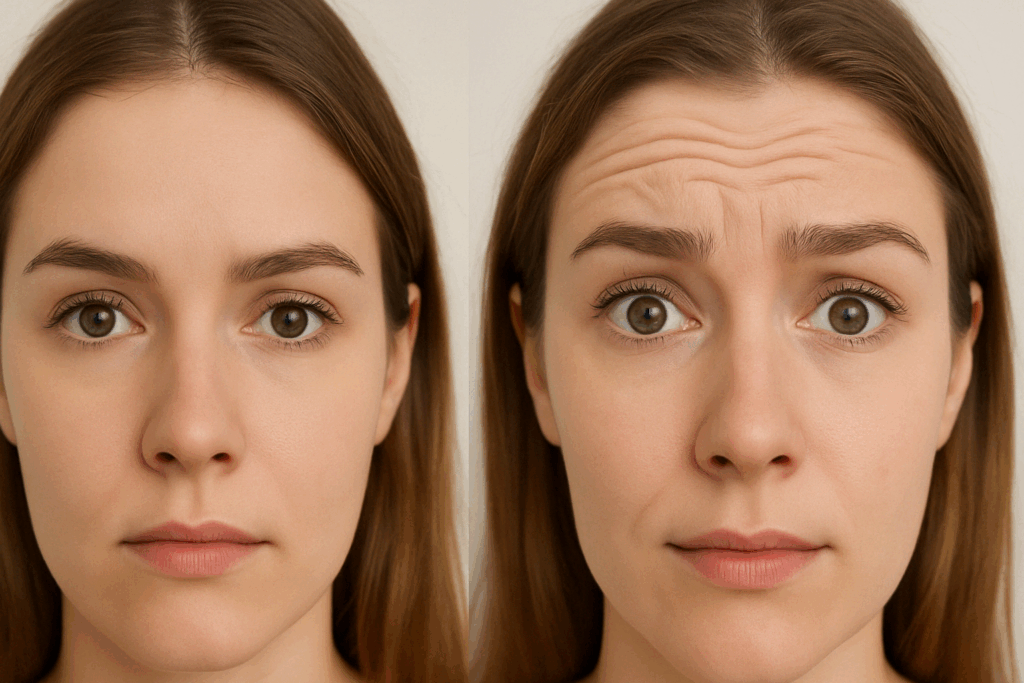For many people, the sight of forehead lines in their early twenties can be both surprising and unsettling. Conventional wisdom often associates wrinkles with aging, yet more individuals are noticing fine lines and creases appearing as early as their 20s. Whether you are 21 with wrinkles on your forehead or experiencing forehead lines at 23, these changes can prompt questions about skincare, lifestyle, and even mental well-being. Understanding the complex interplay between genetics, environment, facial expression habits, and skin physiology can offer not only reassurance but also valuable strategies for proactive care. With the rise in visibility due to social media and high-definition imagery, the awareness—and sometimes concern—around developing wrinkles on the forehead at 23 or younger has intensified. However, science provides clarity: early forehead lines are not necessarily a sign of premature aging but rather a multifactorial phenomenon worthy of nuanced discussion.
You may also like: How to Choose Skin Care for Fine Lines: Evidence-Based Tips for Healthier, Younger-Looking Skin

The Physiology Behind Forehead Lines in Your 20s
To understand why someone may have forehead lines in their 20s, it is essential to start with the biology of skin. The skin’s elasticity and resilience are largely determined by the presence of collagen and elastin—two structural proteins produced in the dermis. These proteins form a supportive matrix that keeps the skin firm, smooth, and able to recover from motion. However, the production of collagen begins to decline as early as the mid-20s, and in some individuals, even earlier due to genetic factors or environmental exposures. Repeated muscle contractions—like those used in raising the eyebrows or frowning—create mechanical stress on the skin. Over time, even in youth, these repeated movements can etch lines into the skin.
When someone notices forehead lines at 23, it may be a reflection of habitual facial expressions combined with subtle shifts in skin structure. The dynamic nature of forehead muscles, particularly the frontalis, makes this region especially prone to visible expression lines. Additionally, skin hydration levels, barrier integrity, and overall facial tension can influence the prominence of these lines. Therefore, being 21 with wrinkles on the forehead is not necessarily unusual but a signal that your skin is actively responding to both internal and external cues.

Genetics, Skin Type, and Early Wrinkle Formation
One of the most underappreciated factors in wrinkle development is genetics. People inherit not only their facial structure but also the quality, thickness, and resilience of their skin. Those with lighter, thinner skin or lower natural oil production are more prone to showing fine lines earlier than those with thicker or more sebaceous complexions. This explains why someone might be puzzled to see wrinkles on their forehead at 23 while peers appear unaffected.
Moreover, ethnicity and phototype play significant roles. Fair-skinned individuals are typically more vulnerable to ultraviolet (UV) damage, which accelerates the breakdown of collagen and elastin. Even without sunburn, cumulative sun exposure can lead to the early onset of static lines—those that remain visible even when the face is at rest. A family history of early wrinkles can also hint at your likelihood of developing forehead lines in your 20s. While it may not be preventable, this awareness allows for earlier intervention and customized skincare routines.
Sun Exposure, UV Damage, and Photoaging
Ultraviolet radiation is among the most potent accelerators of skin aging. UVA rays, in particular, penetrate deep into the dermis and contribute to the degradation of connective tissue. Repeated sun exposure, even in brief increments during commutes or outdoor breaks, accumulates over time and can result in photoaging. This process leads to the early development of fine lines, especially in exposed areas such as the forehead.
Young adults often underestimate the long-term impact of intermittent sun exposure, especially if tanning is perceived as desirable. Unfortunately, sun damage is insidious and not always immediately visible. For someone experiencing forehead lines at 23, examining past sun habits—such as inadequate SPF use, frequent tanning, or even childhood sunburns—can help illuminate the cause. Incorporating daily sun protection, preferably with broad-spectrum SPF 30 or higher, is one of the most effective strategies to delay visible signs of aging.

Stress, Cortisol, and Skin Resilience
Mental health and psychological well-being are rarely discussed in the context of wrinkle formation, yet they are intimately connected. Chronic stress leads to the release of cortisol, a hormone that not only impacts immune and metabolic function but also accelerates the aging process of the skin. Cortisol impairs skin barrier repair, reduces collagen synthesis, and increases transepidermal water loss, all of which contribute to the appearance of fine lines and dryness.
Moreover, stress often manifests physically through facial expressions such as frowning, squinting, or furrowing the brow. These microexpressions, repeated countless times during emotional tension, can deepen the grooves across the forehead. For someone who is 21 with wrinkles on the forehead, assessing emotional stressors and practicing relaxation techniques—such as mindfulness, breathing exercises, or even cognitive behavioral therapy—can mitigate not only psychological strain but also its visible consequences on the skin.

Facial Expressions and the Role of Muscle Memory
Facial expressions are a fundamental part of human communication, yet their habitual repetition has long-term implications for skin texture. The forehead is a particularly expressive region, engaged during surprise, concern, curiosity, and concentration. The muscles responsible for these movements, when frequently activated, begin to carve patterns into the overlying skin. These are known as dynamic wrinkles, and when the skin begins to lose elasticity, they can become permanent.
If you’ve noticed forehead lines at 23 or even earlier, it may be helpful to reflect on your daily facial expressions. Do you furrow your brow while reading or concentrating? Do you raise your eyebrows often while speaking? Becoming aware of these habits is the first step to minimizing their impact. Some dermatologists even recommend practicing a neutral facial position throughout the day to reduce unnecessary muscular engagement. This does not mean suppressing emotion but rather becoming conscious of repetitive, unconscious movements that may contribute to early forehead lines in your 20s.
Sleep, Hydration, and Skin Recovery
Sleep is when the body enters its most active regenerative phase, and skin is no exception. During deep sleep cycles, the body increases cell turnover, enhances collagen production, and repairs daily oxidative stress. Chronic sleep deprivation impairs these restorative processes and contributes to the appearance of dullness, dehydration, and fine lines. For someone noticing wrinkles on the forehead at 23, sleep hygiene should not be overlooked as a vital component of skin health.
Hydration also plays a critical role. Dehydrated skin lacks the plumpness and turgor necessary to mask fine lines, making them more pronounced. While topical moisturizers can temporarily restore suppleness, internal hydration is equally important. Water-rich foods, sufficient fluid intake, and electrolyte balance help support the skin’s natural moisture barrier. Combining adequate sleep with mindful hydration can visibly reduce the prominence of forehead lines in your 20s and support long-term skin resilience.

Skincare Ingredients That Support Early Intervention
Many individuals in their early twenties shy away from anti-aging products, believing them to be unnecessary. However, early skincare intervention does not mean resorting to aggressive treatments but rather incorporating ingredients that support skin health and collagen maintenance. Retinoids, for example, have been extensively studied for their ability to stimulate fibroblasts and enhance cell turnover. Used properly, they can soften the appearance of fine lines and improve overall skin tone.
Antioxidants such as vitamin C and niacinamide are also beneficial. These ingredients neutralize free radicals generated by environmental stressors like pollution and UV exposure. They also support collagen integrity and reduce inflammation, both of which are essential in managing the early signs of aging. For someone 21 with wrinkles on the forehead, adopting a preventative skincare regimen focused on barrier repair, hydration, and antioxidant defense can significantly slow the progression of forehead lines.
The Impact of Diet and Nutrient Deficiency on Skin Health
Nutrition profoundly influences skin structure and function. Diets high in sugar and processed carbohydrates increase glycation— a biochemical process that damages collagen and elastin fibers, making them brittle and less elastic. On the other hand, a nutrient-dense diet rich in vitamins A, C, E, and essential fatty acids supports skin regeneration and elasticity. These nutrients act as co-factors in collagen synthesis and contribute to the maintenance of a strong, resilient skin barrier.
For those noticing forehead lines at 23, evaluating dietary habits may yield valuable insights. Insufficient intake of omega-3 fatty acids, for example, can lead to dry, inflamed skin more prone to wrinkling. Zinc and selenium deficiencies may impair wound healing and antioxidant defense, both crucial for youthful skin. Eating a balanced diet with plenty of leafy greens, fruits, nuts, seeds, and high-quality proteins can create a biochemical environment that is less conducive to wrinkle formation.

The Role of Blue Light and Digital Exposure
With the rise of remote work, digital screens have become an omnipresent part of modern life. Emerging research suggests that blue light emitted from smartphones, tablets, and computer screens may contribute to oxidative stress and photoaging. While its impact is not as significant as UV radiation, prolonged and close-range exposure may accelerate the formation of fine lines, particularly in expressive zones like the forehead.
In addition, screen time often coincides with prolonged facial expressions—such as squinting or furrowing the brow—that can reinforce muscle memory patterns. For someone experiencing wrinkles on the forehead at 23, reducing screen time, adjusting screen brightness, and using blue light filters may serve as practical, non-invasive interventions. Skincare products containing antioxidants can also offer some level of protection against light-induced oxidative damage.
When to Consider Professional Treatments
While lifestyle adjustments and skincare play a substantial role in managing forehead lines in your 20s, some individuals may seek more immediate or pronounced results. Dermatological treatments such as botulinum toxin (Botox), chemical peels, or microneedling can be considered in select cases. Botox works by temporarily paralyzing the muscles responsible for dynamic wrinkles, thereby preventing further deepening. When administered judiciously, it can serve as a preventive measure even in younger adults.
Other treatments like laser resurfacing or radiofrequency therapy aim to stimulate collagen production and improve skin texture over time. However, these interventions should always be undertaken with professional guidance, ideally from a board-certified dermatologist. For someone 21 with wrinkles on the forehead, such treatments may not be necessary, but understanding available options can empower informed decision-making as skin needs evolve.
Psychological Impact and Perceptions of Aging
It is important to recognize that visible changes in appearance, even subtle ones like forehead lines, can affect mental well-being—particularly in a culture where youth is often idealized. The experience of noticing forehead lines in your 20s can trigger feelings of insecurity, self-consciousness, or even anxiety about aging. Social comparison, often exacerbated by curated images on social media, can further distort perceptions of what is normal or acceptable.
However, wrinkles are not inherently negative or pathological. They are markers of expression, experience, and individual identity. Shifting the narrative from one of flaw correction to skin health optimization can reduce stigma and promote healthier self-esteem. For someone seeing wrinkles on the forehead at 23, embracing a holistic view of beauty that includes self-care, mental wellness, and authenticity may be more rewarding than the pursuit of perfection.

Reframing Wrinkles as a Holistic Health Signal
Rather than viewing forehead lines as a cosmetic defect, they can be seen as indicators of broader health patterns. Skin is a dynamic organ that reflects hydration status, nutrient availability, emotional well-being, and environmental exposures. In this sense, noticing forehead lines in your 20s can be an invitation to pause, reflect, and realign with supportive habits.
This reframing encourages a proactive—not reactive—approach to aging. By understanding the factors that influence skin quality, from cortisol levels to digital screen use, individuals can make empowered choices that extend beyond topical solutions. Whether you are 21 with wrinkles on your forehead or exploring treatment options at 23, this awareness fosters a more compassionate and evidence-based approach to self-care.
Embracing Preventive Skin Care and Empowered Aging
Ultimately, the presence of forehead lines in your 20s does not mean you have aged prematurely. Instead, it represents a convergence of genetics, lifestyle, expression, and environment—each of which can be addressed with intention and knowledge. From adopting daily SPF to exploring mindfulness techniques, the tools for prevention and care are varied and accessible.
Understanding that wrinkles on the forehead at 23 are not uncommon can reduce shame and encourage curiosity. Skin, like all organs, evolves over time. Supporting it with thoughtful practices—from hydration to stress management—can make a visible difference not just in appearance, but in confidence and emotional health as well.
Frequently Asked Questions: Understanding Forehead Lines in Your 20s
Why am I 21 with wrinkles on my forehead when my friends have none?
Noticing that you’re 21 with wrinkles on your forehead while your peers appear wrinkle-free can be discouraging, but it’s not necessarily a sign that something is wrong. Skin aging is influenced by a blend of intrinsic and extrinsic factors—genetics, bone structure, skin thickness, and lifestyle choices all contribute to how and when fine lines appear. Individuals with more expressive facial habits or who have spent more time outdoors unprotected may develop early signs of aging even in their early twenties. Additionally, subtle differences in hydration, sleep patterns, and even screen exposure can accelerate line formation in some people more than others. Comparing your skin to others can be misleading, as each person’s dermatological baseline and aging trajectory is uniquely personal.
Is it normal to have forehead lines at 23 if I’ve never used anti-aging products?
It’s increasingly common to notice forehead lines at 23, even without prior use of anti-aging skincare. While topical products can delay the visible signs of aging, they’re only one piece of a much larger puzzle. Your skin may begin showing fine lines due to environmental stressors such as pollution or high-stress lifestyles that increase cortisol levels, which in turn affects collagen production. The fact that you’re noticing forehead lines at 23 doesn’t necessarily mean your skin is aging faster—it could simply be reacting to lifestyle patterns or your natural facial movement habits. Early care and prevention, even with basic moisturization and sun protection, can make a significant difference moving forward.
Can forehead lines in your 20s be reversed completely, or are they permanent?
Forehead lines in your 20s are typically dynamic wrinkles, which means they appear with facial movement and are not always permanent. In many cases, they can soften or disappear entirely with appropriate interventions. Incorporating peptides, antioxidants, and gentle retinoids into your skincare routine can improve skin texture and reduce line visibility over time. If you’re 21 with wrinkles on your forehead and they’ve formed recently, your skin still has a strong regenerative capacity, especially with proper hydration, sleep, and nutritional support. However, if lines are deeply etched due to habitual expressions or environmental damage, they may require more targeted treatments like neuromodulators or collagen-stimulating procedures to fully resolve.
What’s the psychological impact of having forehead lines at 23 in today’s beauty culture?
Experiencing forehead lines at 23 can feel emotionally disorienting, especially in an era of filter-enhanced perfection on social media. Many individuals internalize these changes as flaws rather than natural expressions of the skin’s dynamic nature. This can result in lowered self-esteem, increased anxiety about appearance, or pressure to seek premature cosmetic interventions. It’s important to remember that being 23 with wrinkles on your forehead is not abnormal—it simply reflects your unique combination of genetics, expressions, and environmental factors. Approaching your skin with acceptance and informed self-care can help reframe wrinkles as part of your identity, not as imperfections to be erased.
Could my job be making my forehead lines worse in my 20s?
Yes, your profession or work environment can significantly influence wrinkle development, especially if your job involves high stress, intense focus, or screen exposure. Many people who are 21 with wrinkles on their forehead report holding tension in the brow area while concentrating, which encourages repetitive muscle contractions. Similarly, prolonged screen time often leads to squinting or furrowing, which can reinforce facial muscle memory patterns that translate into lines. If your job is sedentary and keeps you indoors, you may also be lacking in fresh air, hydration, or natural light exposure—factors that support skin health. Simple changes like using ergonomic screens, adjusting lighting, or taking stretch breaks can ease facial tension and reduce wrinkle progression.
Are there lesser-known skincare ingredients that help with forehead lines in your 20s?
Beyond common actives like retinoids and vitamin C, there are several lesser-known yet effective ingredients that support youthful skin. Acetyl hexapeptide-8, often called “Botox in a bottle,” is a peptide that helps relax facial muscles, which can be especially helpful if you’re 21 with wrinkles on your forehead caused by repetitive expressions. Another emerging ingredient is bakuchiol—a plant-based alternative to retinol that provides similar anti-aging benefits with less irritation. Centella asiatica (also known as gotu kola) promotes collagen synthesis and calms inflammation, making it ideal for sensitive skin types dealing with early forehead lines. These ingredients can be integrated into a 20s-friendly routine that emphasizes prevention, resilience, and minimal invasiveness.
Why do my forehead lines deepen after a night of poor sleep?
Poor sleep accelerates skin aging through hormonal and inflammatory pathways. When you’re sleep-deprived, cortisol levels rise and growth hormone levels drop, both of which impair collagen production and skin repair. For those experiencing forehead lines at 23, a single night of bad sleep might visibly accentuate lines due to water retention, puffiness, or reduced skin barrier function. Sleep also governs circadian rhythm-driven skin cell turnover, which helps keep the skin smooth and elastic. Establishing consistent sleep hygiene—through regulated bedtime, blue light reduction, and stress-reduction rituals—can help minimize this overnight impact and improve long-term skin resilience.
Is it safe to start cosmetic treatments like Botox in your early 20s?
Cosmetic treatments like Botox have become more common among younger adults as a form of “prejuvenation,” intended to prevent dynamic wrinkles from becoming permanent. While the treatment is generally safe when administered by a licensed and experienced provider, starting in your early 20s should be a carefully considered decision. If you’re 23 with wrinkles on your forehead and they’re beginning to stay visible at rest, Botox may help retrain facial muscles and prevent further deepening. However, overuse or starting too early may limit natural expression and lead to dependency over time. A thorough consultation with a board-certified dermatologist is essential to determine whether your wrinkle pattern truly warrants intervention at this stage.
Do certain diets help prevent or reverse forehead lines in your 20s?
Nutritional support for skin health is more influential than many people realize, especially when forehead lines in your 20s are just starting to emerge. Diets rich in antioxidants—such as berries, leafy greens, and colorful vegetables—help neutralize free radicals that damage collagen. Protein intake is also critical, as amino acids provide the building blocks for skin repair and regeneration. Hydrating foods like cucumbers, watermelon, and chia seeds can supplement water intake and support the skin’s moisture barrier. If you’re 21 with wrinkles on your forehead and your diet consists largely of processed, sugary foods, addressing nutritional deficiencies may noticeably improve skin elasticity and reduce line formation.
Could early forehead lines indicate an underlying health issue?
While most forehead lines in your 20s are benign and related to lifestyle or genetics, there are instances where they may reflect deeper imbalances. Chronic inflammation, autoimmune disorders, or significant nutrient deficiencies—such as zinc, iron, or B vitamins—can impair skin repair mechanisms and accelerate visible aging. Some studies have even drawn correlations between pronounced forehead lines and cardiovascular health risk, although more research is needed to establish causation. If you’re experiencing other systemic symptoms alongside wrinkles on the forehead at 23, such as fatigue, digestive issues, or hair thinning, it may be worthwhile to consult a healthcare provider. A holistic evaluation can determine whether early forehead lines are a standalone cosmetic concern or part of a broader health picture.
Key Takeaways on Forehead Lines at 21, 23, and Throughout Your 20s
Noticing forehead lines in your 20s is a multifaceted experience influenced by biology, behavior, and environment. Being 21 with wrinkles on the forehead or facing forehead lines at 23 is more common than many realize and should not be viewed as a failure of youth or vitality. Instead, these early changes offer a valuable opportunity to deepen your understanding of skin health and take preventive steps that support long-term well-being.
From managing sun exposure and stress to incorporating nourishing skincare and balanced nutrition, the path to healthy skin is holistic and deeply personal. Wrinkles are not enemies to be eradicated but signals to be understood. By approaching them with curiosity, compassion, and scientific insight, you can navigate your 20s with greater confidence—and perhaps a new appreciation for the stories your skin begins to tell.
Was this article helpful? Don’t let it stop with you. Share it right now with someone who needs to see it—whether it’s a friend, a colleague, or your whole network. And if staying ahead on this topic matters to you, subscribe to this publication for the most up-to-date information. You’ll get the latest insights delivered straight to you—no searching, no missing out.
Further Reading:
Forehead Wrinkles at Different Ages (and How to Treat Them)
Wrinkles & Fine Lines: Types, Causes & Prevention
I’m in My 20s —Why Do I Already Have Wrinkles?
Disclaimer
The information contained in this article is provided for general informational purposes only and is not intended to serve as medical, legal, or professional advice. While Health11News strives to present accurate, up-to-date, and reliable content, no warranty or guarantee, expressed or implied, is made regarding the completeness, accuracy, or adequacy of the information provided. Readers are strongly advised to seek the guidance of a qualified healthcare provider or other relevant professionals before acting on any information contained in this article. Health11News, its authors, editors, and contributors expressly disclaim any liability for any damages, losses, or consequences arising directly or indirectly from the use, interpretation, or reliance on any information presented herein. The views and opinions expressed in this article are those of the author(s) and do not necessarily reflect the official policies or positions of Health11News.